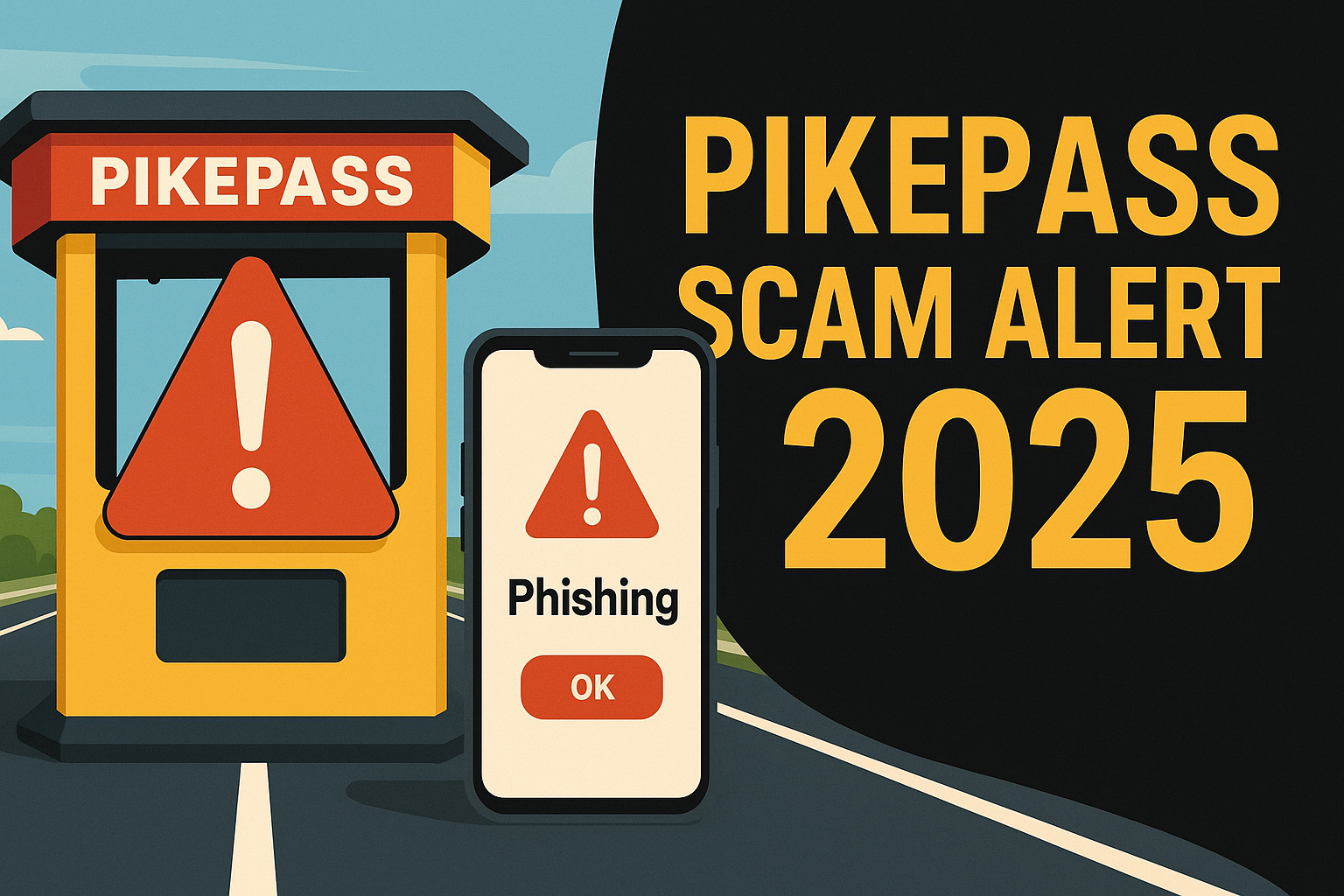Introduction: Why This Matters in 2025
Nowadays everyone uses PikePass to pay their tolls, but scams have also increased a lot. In 2025, digital frauds and phishing attacks have become quite advanced – and this includes PikePass scams as well. This blog is for all those daily commuters who regularly travel on the Oklahoma Turnpike or other US toll roads. In this blog, I will give you complete information and will also tell you how to avoid it.

What is PikePass?
PikePass is an electronic toll collection system operated by the Oklahoma Turnpike Authority (OTA). It has a transponder on your vehicle that allows contactless payment at toll booths.But the problem occurs when scammers misuse this system – to steal your account details, payment info, and identity.
And then they simply empty your account without thinking how hard you must have worked to earn this money and those scammers empty your account in minutes. Listen to me carefully and do not lose your hard earned money like this. I can understand that if someone is earning money with hard work and he goes away then it hurts a lot but after reading this blog I assure you that no one will be able to steal your money in future.
How PikePass Scams Work in 2025
PikePass scams have become more sophisticated in 2025. Here are some popular scam types:
1. Fake SMS or Email Alerts (Phishing)
- You get a message: “PikePass payment overdue. Click here to avoid penalty.”
- As soon as you click on the link, you reach a fake site where your information is stolen.
2. Toll Payment Scams via Spoofed Websites
- Fake PikePass websites are promoted through Google ads or phishing emails.
- Users think that these are genuine sites, but as soon as they make the payment, the money goes into the scammer’s account.
3. Caller ID Spoofing
- Scammer calls you from PikePass agent bank and says toll is due.
- You are asked for your card or ACH payment details.
4. QR Code Toll Scam
- Fake QR codes are placed on toll booths or highway signs.
- If you scan, they will redirect you to phishing page.

Real Incidents & Proofs
News Reference 1: KOCO News Report
In April 2025, KOCO News reported that Oklahomans received fraudulent text messages claiming unpaid PikePass tolls. These messages mimicked official OTA notifications but redirected users to phishing sites. Victims reported financial losses after entering their information on these fake websites.KOCO+2KOCO+2Oklahoma City News+2
Source: KOCO
News Reference 2: OTA’s Official Warning
The Oklahoma Turnpike Authority (OTA) issued an official warning about smishing text scams. They emphasized that OTA will never request personal or banking details via SMS or email. The agency is actively working with the FBI to dismantle fraudulent websites associated with these scams.YouTube+3Yahoo News+3KOKH+3KOOL 105.5+1Oklahoma City News+1
Source: Oklahoma City News
Case Study: Tulsa Commuter Incident
While specific individual cases are not publicly detailed, OTA has acknowledged numerous reports from commuters who received scam texts and, upon interacting with them, suffered financial losses. The agency has taken steps to address these incidents and protect consumers.
Source: Oklahoma City News
Video Report: OTA Warns of Smishing Text Scams
For a visual overview, KOCO News has released a video detailing the rise of smishing text scams targeting PikePass users and the OTA’s response to these threats.Yahoo News+6Oklahoma City News+6KOKH+6
Watch here: KOCO News Video
Why Are Daily Commuters at Risk?
- Daily toll users react to messages quickly.
- Notifications seem genuine because such alerts are common while using daily toll.
- Accessing PikePass app on public wi-fi or unsecured networks increases the risk.
How to Spot a PikePass Scam
Check Sender ID
- Genuine PikePass SMS or email comes from OTA domain: @pikepass.com
- If the sender address is weird (like @tollalerts-paynow.ru), then it is a scam.
View the URL carefully
- Official PikePass website: https://www.pikepass.com
- Misspellings like pike-pas.com, pik3pass.net, etc. avoid it.
No Urgency Language
“Pay within 1 hour or penalty!” type language is red flag.
QR Code Verification
Do not use QR codes installed on the highway until they are OTA verified.
How to Avoid PikePass Scams in 2025
1. Use the Official App Only
- Only use the verified PikePass mobile app.
- Verify reviews and downloads on App Stores.
2. Enable Two-Factor Authentication
Enable 2FA for PikePass account to prevent unauthorized login.
3. Avoid Clicking on Unsolicited Links
Do not click on any unknown link received on SMS, email or WhatsApp.
4. Update Your Payment Info Only from Official Site
Update card or bank details only through the official website/app.
5. Register for Auto Alerts
Enable official OTA alerts so that you get genuine notifications.
What To Do If You Are Scammed
1. Immediately Contact OTA
Call OTA customer care at 1-800-745-3727 and report the incident.
2. Inform Your Bank
Get card blocked and report unauthorized transactions.
3. File a Police Complaint
Cybercrime portal: https://www.cybercrime.gov.in
4. Monitor Credit Score
Check for unusual activities via Experian, Equifax, or TransUnion.
Government & OTA Measures in 2025
New Features of OTA:
- AI-based fraud detection system which detects unusual access.
- Secure push notifications that do not contain any links.
Public Awareness Campaigns:
- Warning ads are running on TV, Radio and YouTube.
- Posters are being displayed at public rest stops and toll booths.
People Also Ask (PAA)
How do I know if a PikePass message is fake?
If the message demands urgent payment or has a suspicious link, it could be fake. Please verify the sender email or number.
What to do if I paid on a fake PikePass site?
Immediately inform your bank and report to OTA. Also file a police complaint.
Does PikePass ever ask for bank details via SMS?
No, PikePass never asks for personal or bank info via SMS or email.
How can I secure my PikePass account?
Enable 2FA, use only the official app or website, and ignore suspicious alerts.
Conclusion:
In 2025 when everything has gone digital, scams have also become smart. In such a situation, keeping yourself alert is the biggest precaution. If you like this blog then definitely read it and Share To Others.

